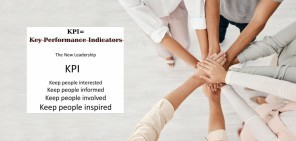Since October 2022 Softline has been operating under the brand name Noventiq.
As organizations are transforming their operation towards greater flexibility, Human Resources has an increased responsibility in supporting the workforce amidst the changes. The role of HR has experienced a significant shift from hiring, firing and payroll to more diversified roles with remote and hybrid work, employee-wellbeing, diversity, inclusion and reskilling, upskilling.
To embrace changes and manage workforce more productively, emerging HR technologies should be incorporated into the company’s operation. By relying on technology to support HR, companies can benefit from a more engaged workforce and can excel in retaining employees. However, it’s not always clear which trends to follow. Here you can find 6 HR trends that improve the employee experience (EX) based on Microsoft’s ebook.
Trend 1: AI
AI-supported decision-making technology can help assess employee wellbeing by looking for signs of burnout. It can also reduce the effort spent on time-consuming and less-stimulating tasks such as screening potential job candidates.
Trend 2: Self-service resources
Self-service HR tools allow employees to update their personal information, apply for expense reimbursement, and access company benefits information on their own. By definition they help employees be more efficient, provide real-time updates, create better team morale, and support more workplace data transparency.
Trend 3: Employee onboarding
Besides the change in workplace, remote work also means empowering employees in some aspects of their onboarding so they are able to find answers to certain questions on their own. Having onboarding programs in the cloud helps provide a consistent, thorough experience where employees can easily access learning and training for their new roles, as well as connect and collaborate with colleagues.
Trend 4: Cloud migration
Moving to the cloud provides teams, wherever their members are located, with easier access to the HR tools and information they need. It’s quicker and more efficient for HR to keep software and information current when it’s located centrally. Cloud technology also provides layers of security and allows for disaster recovery.
Trend 5: Tool consolidation
One-fourth of companies use six or more different tools to meet their EX goals, and half of all employees report that there are just “too many separate tools, apps, and resources.”⁶ They also report being overwhelmed by the number of available resources and lack of appropriate training. Plus, a majority of employers and employees say they would prefer a single EX platform.
Trend 6: Turning HR into ‘value centers’
Organizations are carefully selecting modern HR tools that can drive growth and create a compelling return on investment, changing their HR divisions from cost centers into profit and value centers that play a more integral, strategic role for the business. It’s hard to recruit top people and motivate employees to give their all when they struggle to access outdated data and deal with tools and systems that don’t communicate with each other.
It is vital to review current HR processes and examine the benefits of a single, comprehensive EX platform like Microsoft Viva. By bringing together communications, knowledge, and resources into the flow of work employees can be equipped with precise knowledge and form stronger connections to the company. If you are interested in employee experience, find out more about its significance from our previous post. To learn more about Microsoft Viva and its exact benefits to your company, schedule an appointment with our experts.









